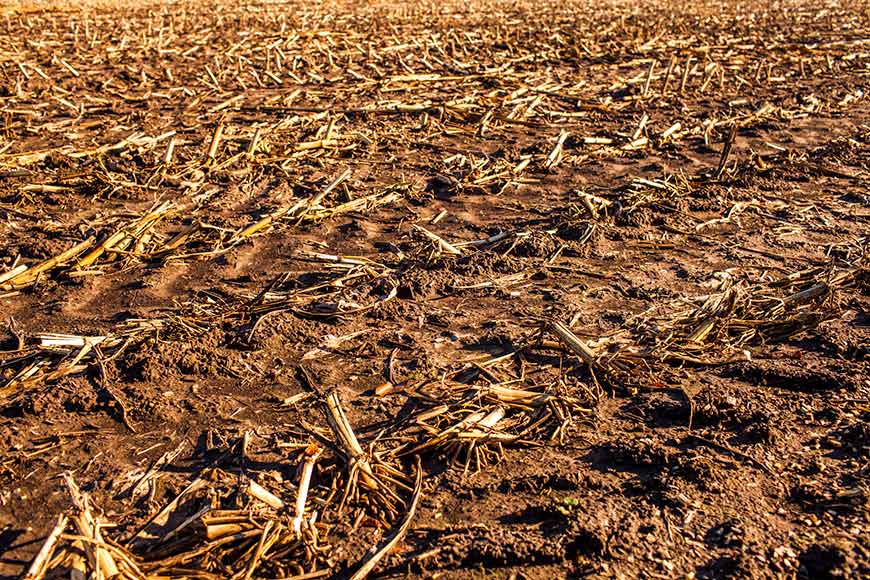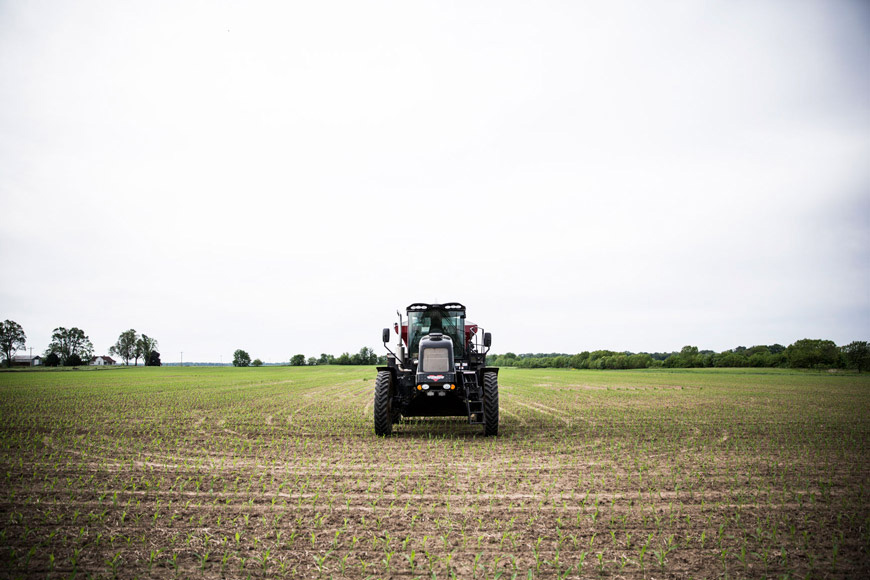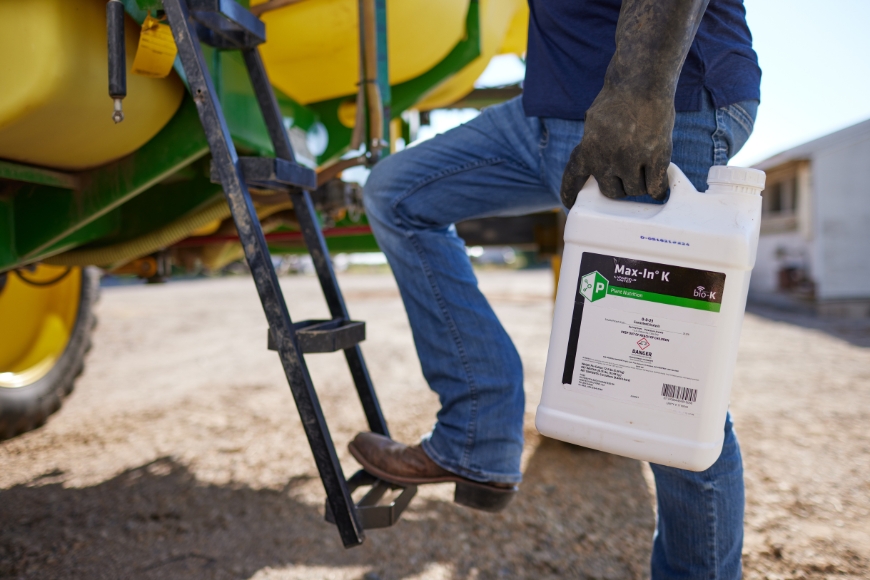5 Tips for Fall Nitrogen Management

Nitrogen is a tough nutrient to manage. It can be immobilized, volatilized or leached before plants even have a chance to uptake it. As you consider fall nitrogen applications, here are five tips to make the most of your dollars and time.
1. Monitor soil temperatures.
Before you apply your fall nitrogen, be sure the soil temperature is at 50 degrees Fahrenheit and declining. Nitrification occurs when soils exceed this threshold, making the potential loss over the winter relatively high.
2. Split your applications.
With fall-applied nitrogen, you’re many months away from crop uptake. About 75% of a corn plant’s nitrogen is taken up before tassel, and 80% of that is taken up between V8 and VT. Even with a nitrogen stabilizer, there is a decent potential for loss during the months between a fall application and crop uptake.
Spoon-feeding nitrogen throughout the season can favor plant availability. Start with ammonia in the fall, follow that with an at-planting application along with your herbicide to get the crop up and running, and finish with a sidedress nitrogen application around V5.
3. Check hybrid response.
The amount of nitrogen you apply will vary each year depending on yield goals, weather conditions, crop rotation and the hybrid’s response-to nitrogen (RTN) score. If your hybrids have a high RTN score, I’d recommend applying more nitrogen with spring applications. I tend to recommend variable-rate applications in the spring rather than the fall, depending on the hybrid’s RTN, rainfall amounts and the previous crop.
4. Stabilize your nitrogen.
Nitrogen stabilizers slow the conversion of ammonium to nitrate, which is critical to keep nitrogen in a form that prevents leaching. I recommend using nitrogen stabilizers with every fall application and potentially with early spring applications, depending on the amount of nitrogen or manure applied. Even at planting, you’re 60 days from when the crop will use most of the available nitrogen, so there’s still potential for significant loss.
N-Serve® and Instinct® are two products that have become widespread with proven track records of helping to stabilize nitrogen. Based on 452 trials from 2010 to 2016, there was an average 8.9 bushel per acre yield increase when Instinct and N-Serve were applied to corn.1 CENTURO™ nitrogen stabilizer from Koch Agronomic Services is another product gaining traction due to its high efficacy and data-backed support. A two-year study across Nebraska, Illinois and Missouri showed that when CENTURO was applied in the fall, corn yield increased by an average of 8 bushels per acre over untreated ammonia, demonstrating the effectiveness of adding a nitrogen stabilizer to your application.2
5. Don’t forget sulfur.
Without enough sulfur, plants can’t use nitrogen efficiently. For every 10 units of nitrogen applied, a unit of sulfur should also be applied. That can come in the form of elemental sulfur in the fall or an AMS or ATS product in the spring. Elemental sulfur doesn’t release quickly, so I recommend no more than 50% of sulfur needs come from elemental sulfur or gypsum. The other 50% of sulfur can be applied in the spring with an AMS or ATS product.
Keep these tips in mind as you prepare for post-harvest nitrogen applications, and contact your WinField United retailer for more information on best nitrogen management practices.
1Based on Verdesian Life Sciences and Dow AgroSciences data on file.
2 Based on data from Koch Agronomic Services in partnership with University of Nebraska, University of Missouri, and the Illinois Fertilizer and Chemical
Association. 8 locations in 3 states. 2016-2017.
All photos are either the property of WinField United or used with permission.
© 2024 WinField United. Important: Before use always read and follow label instructions. Crop performance is dependent on several factors many of which are beyond the control of WinField United, including without limitation, soil type, pest pressures, agronomic practices and weather conditions. Growers are encouraged to consider data from multiple locations, over multiple years and to be mindful of how such agronomic conditions could impact results. WinField is a trademark of WinField United. All other trademarks are the property of their respective owners
1. Monitor soil temperatures.
Before you apply your fall nitrogen, be sure the soil temperature is at 50 degrees Fahrenheit and declining. Nitrification occurs when soils exceed this threshold, making the potential loss over the winter relatively high.
2. Split your applications.
With fall-applied nitrogen, you’re many months away from crop uptake. About 75% of a corn plant’s nitrogen is taken up before tassel, and 80% of that is taken up between V8 and VT. Even with a nitrogen stabilizer, there is a decent potential for loss during the months between a fall application and crop uptake.
Spoon-feeding nitrogen throughout the season can favor plant availability. Start with ammonia in the fall, follow that with an at-planting application along with your herbicide to get the crop up and running, and finish with a sidedress nitrogen application around V5.
3. Check hybrid response.
The amount of nitrogen you apply will vary each year depending on yield goals, weather conditions, crop rotation and the hybrid’s response-to nitrogen (RTN) score. If your hybrids have a high RTN score, I’d recommend applying more nitrogen with spring applications. I tend to recommend variable-rate applications in the spring rather than the fall, depending on the hybrid’s RTN, rainfall amounts and the previous crop.
4. Stabilize your nitrogen.
Nitrogen stabilizers slow the conversion of ammonium to nitrate, which is critical to keep nitrogen in a form that prevents leaching. I recommend using nitrogen stabilizers with every fall application and potentially with early spring applications, depending on the amount of nitrogen or manure applied. Even at planting, you’re 60 days from when the crop will use most of the available nitrogen, so there’s still potential for significant loss.
N-Serve® and Instinct® are two products that have become widespread with proven track records of helping to stabilize nitrogen. Based on 452 trials from 2010 to 2016, there was an average 8.9 bushel per acre yield increase when Instinct and N-Serve were applied to corn.1 CENTURO™ nitrogen stabilizer from Koch Agronomic Services is another product gaining traction due to its high efficacy and data-backed support. A two-year study across Nebraska, Illinois and Missouri showed that when CENTURO was applied in the fall, corn yield increased by an average of 8 bushels per acre over untreated ammonia, demonstrating the effectiveness of adding a nitrogen stabilizer to your application.2
5. Don’t forget sulfur.
Without enough sulfur, plants can’t use nitrogen efficiently. For every 10 units of nitrogen applied, a unit of sulfur should also be applied. That can come in the form of elemental sulfur in the fall or an AMS or ATS product in the spring. Elemental sulfur doesn’t release quickly, so I recommend no more than 50% of sulfur needs come from elemental sulfur or gypsum. The other 50% of sulfur can be applied in the spring with an AMS or ATS product.
Keep these tips in mind as you prepare for post-harvest nitrogen applications, and contact your WinField United retailer for more information on best nitrogen management practices.
1Based on Verdesian Life Sciences and Dow AgroSciences data on file.
2 Based on data from Koch Agronomic Services in partnership with University of Nebraska, University of Missouri, and the Illinois Fertilizer and Chemical
Association. 8 locations in 3 states. 2016-2017.
All photos are either the property of WinField United or used with permission.
© 2024 WinField United. Important: Before use always read and follow label instructions. Crop performance is dependent on several factors many of which are beyond the control of WinField United, including without limitation, soil type, pest pressures, agronomic practices and weather conditions. Growers are encouraged to consider data from multiple locations, over multiple years and to be mindful of how such agronomic conditions could impact results. WinField is a trademark of WinField United. All other trademarks are the property of their respective owners





